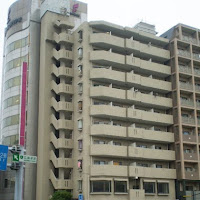This is a momentous day. I went for my first Hot Yoga class! Yes, were you expecting me to talk about the correction in the USA or the earthquake in Japan? Well, jokes aside, I have not stretched myself in so many different directions and curled myself up in so many positions in ages, if at all! It was all done in a room set at a temperature of 38 degrees centigrade. I lost almost a kilo after the session. Had a dinner of salad, fish and rice after the session just to continue feeling good about myself doing something healthy for a change!
Anyway, when I came home, I saw 15 comments in my blog awaiting moderation and, of course, response. Wow! That's a record but one that is not taken note of by any analytical tools. I guess people must really be spooked today by all the happenings in the market, including Cambridge Industrial Trust's (CIT) rights issue.
OK, if you can't tell by now, this is going to be a mish mash of a blog post. I am going to talk about all the stuff that's on my mind and maybe more. I am still feeling very warm from yoga, despite having showered twice, once at the yoga studio and once at home (after replying to all the comments in my blog). Full from a very healthy dinner, I am feeling very drowsy at this moment.
Now, first off, CIT. I got in at 51c this morning and I blogged about it here. The sell down after lunch was rather unexpected. Well, so was the earthquake in Japan. These things happen. As long as we got in at a fair price, there should be no regrets.
What are my plans now? Buy more if its price weakens further? Looking at the daily chart, CIT is trading below the 200dMA. So, I look at the weekly chart for hints of the next support. The rising 100wMA is at 46.5c now and should provide relatively strong support. 46.5c? That is some way to fall from here! Yes, it is but remember that TA shows us where the supports are and not necessarily that they would be tested. If it should be tested while the counter is still CR, I would buy more.
Buying 16 lots more at 46.5c would mean an average price of 46.11c. With a DPU of 5.07c, post rights, it would be a distribution yield of almost 11%! Of course, owning more units could possibly entitle me to more excess rights as well.
Next, the biggie: earthquake in Japan. This has been described as the worst earthquake in Japan in many years. In my memory, the last big quake was the Kobe earthquake in 1995 and that measured 7.2 on the Richter scale. The earthquake in question now measured 8.9 on the Richter scale. It is a catastrophe that has triggered tsunami warnings "for countries to the west and across the Pacific as far away as Colombia and Peru". Read report here.
For investors of Saizen REIT, we are concerned as to how much of the REIT's portfolio is affected. Saizen REIT currently owns 146 buildings of which 28 are in the affected areas. These buildings jointly account for about 15% of the REIT's income and 15.5% of its NAV.
In a timely report by its co-CEO, Mr. Chang Sean Pey, it is revealed that "the asset manager of Saizen REIT are in the process of contacting the local property managers in Sendai, Koriyama and Morioka to find out their well being and to assess the impact of the Earthquake on Saizen REIT’s property portfolio.....(and) will continue to make appropriate announcements as and when it receives updates on the above matter." Read announcement here.
There is not much else we can do but to wait and I won't lose sleep over this. Why? The unit price of the REIT fell and hit 15c at one point before closing at 15.5c which is a support I just blogged about yesterday. It is where we find the upturned 100wMA now. Read blog post here.
Fundamentally, if Saizen REIT did not insure any of the buildings concerned and this is very unlikely, we could expect a revised NAV of about 22.67c/unit and a reduced DPU of 0.88c, bearing in mind that this could be 50% higher if not for the amortising nature of its loans. These numbers do not include potential contributions from YK Shintoku which is in default of its CMBS. Weaker numbers, no doubt, but not catastrophic.
So, stay calm and rational, wait for the management's report and if the market should overeact on the downside, I would buy more. That's what I'm doing and I am going to enjoy the weekend. You should too. :)
Friday, 11 March 2011
Friday, 11 March 2011










































